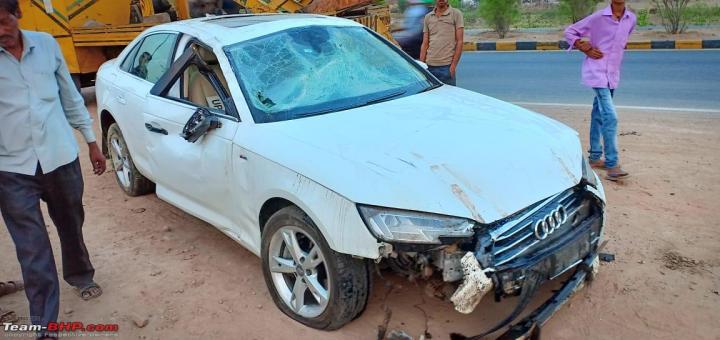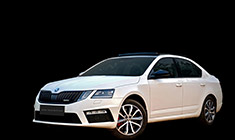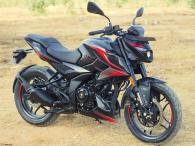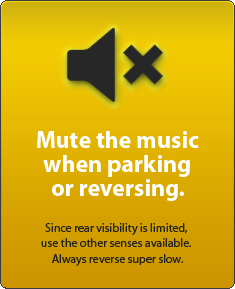News
Common myths & underlying data behind road accidents in India
While things seem very bleak at this moment, historical data puts this in an entirely different light.
BHPian Stribog recently shared this with other enthusiasts.
There are many preconceived "notions" that many of us have on road accidents. A few I see often in many threads in this forum itself:
- 2-wheelers are inherently unsafe
- The converse, cars are safer
- Trucks and buses are doom-bringers
And a lot more.
Well, let us look at the numbers behind accidents in India. Morbid yes, but relevant also IMO. MoRTH publishes data annually (like pretty much all central govt. bureaus like say NCRB) which can be a treasure trove for those who like number crunching.
At the outset though, there is no escaping the fact that Indian roads are fatal in absolute numbers.
Some Meta stats - All data are from the Sept report, covering 2019-20 (no report has been published thus far this year, but would be interesting to see the impact COVID had on accidents)
- India, ranks 1st in the number of road accident deaths across the 199 countries reported in the World Road Statistics, 2018 followed by China and US. As per the WHO Global Report on Road Safety 2018, India accounts for almost 11% of the accident related deaths in the World
- A total of 4,49,002 road accidents have been reported by States and Union Territories (UTs) in the calendar year 2019, claiming 1,51,113 lives and causing injuries to 4,51,361 persons. Normalised to population, you have. A 0.05% chance of being involved in an accident with a 0.01% chance of it being fatal.
- In percentage terms, in 2019, the number of accidents have decreased by 3.86 percent, persons killed has decreased by 0.20% and injuries have decreased by 3.85 percent over that of the previous year i.e. 2018. Road accident severity measured by the number of persons killed per 100 accidents has seen an increase of 1.3 percentage points in 2019 over the previous year
- National Highways & State Highways which account for about 5% of the total road length accounts for a disproportionately large share of accident related deaths of 61%. Other Roads which constitute about 95 % of the total road length were responsible for the balance 39% deaths respectively
- Over-speeding accounts for the maximum share of road accident and road accident deaths (ranging between 63% and 73% for accidents and between 62% and 70% for road accident deaths) on all the categories of National Highways and thus follows the trend seen on all India basis. To be safe (as much as possible) 4+5 should be combined. Stick to speed limits on NH & SH, follow defensive driving and statistically chances of your being involved in an accident will drop significantly.
- The share of males in number of total accident deaths was 86% while the share of females hovered around 14% in 2019. This reflects both the number of male drivers (though we don't have official data on the number / % of female drivers) and IMO aggressive driving by men.
Historical Perspective:
While things seem very bleak at this moment, historical data puts this in an entirely different light. There has been a drastic reduction in accidents, fatalities and injuries starting 1970 on though the number of vehicles on the road has exploded.
Some top-line numbers:
1970 - Vehicle Density (VD) 1.18 (number of vehicles / km of road), Fatality Rate (FR) 103.5 (this is the number of fatal accidents per 10,000 pop)
1980 - VD 3.03, FR 53.1
1990 - VD 9.65, FR 28.3
2000 - VD 14.73, FR 16.2
While our vehicle density went up 4.5X from 1980 to 2000, our FR dropped by 70%
2010 - VD 27.88, FR 10.5
2018 - VD 39.78, FR 6.2 (data for 2019 not available when this report was published)
From 2010-18, our VD went up by 42%, but our FR dropped by 40%.
If these values are projected into the future, our accident and FR might just meet the Stockholm commitment of halving road accidents and fatalities by 2030.
Coming up in part 2, would be vehicle-wise accident and fatality rates. Let us see if the urban legends hold up or remain that, urban legends.
Here's what BHPian RedTerrano had to say on the matter:
I cannot help but wonder, how the authorities arrived at the conclusion that over speeding caused accidents leading to death. How many speed traps or radar guns have been deployed on the highways? Is any data available for this?
How about non-fatal accidents on the highways? How many caused due to lack of lane demarcation, lack or road signs, unpainted speed breakers, road blockages set up by local RTA (without proper signage or reflectors)? Any data available on this?
Also, is there any data available for German autobahns where there is no speed limit? How do those fatalities fare as compared to Indian highways?
Here's what BHPian PearlJam had to say on the matter:
Why do you think this is a preconceived notion? Rest of the things being the same, even a gentle hit to a two wheeler traveling at 30 KMPH could cause the rider to fall. Or, there could be a small oil patch on the road that causes the rider to skid and fall. They could get crushed by other vehicles. They could have head injuries if the helmet was improper. They could be affected by sudden winds. A car driver would most likely remain safe, even in a Maruti 800, in the same situation. This is just one example. I'm not even talking of any safety equipment.
You have given a few numbers that some show absolute numbers and a few percentages. This is no way "concludes" your points (1) and (2). For example, there are no numbers on 2 wheelers vs cars on our roads. There are no rough average numbers on the distances travelled (or time spent on the road) by 2 wheelers vs cars. There are no numbers on whether they drive/ride in the cities or on the highways. There are no numbers on the average speeds. There is no mention of day/night driving/riding. I see the numbers as meaningless and incomplete.
Am I missing something here?
Check out BHPian comments for more insights and information.
- Tags:
- Indian
- Member Content
- Accidents













.png)





